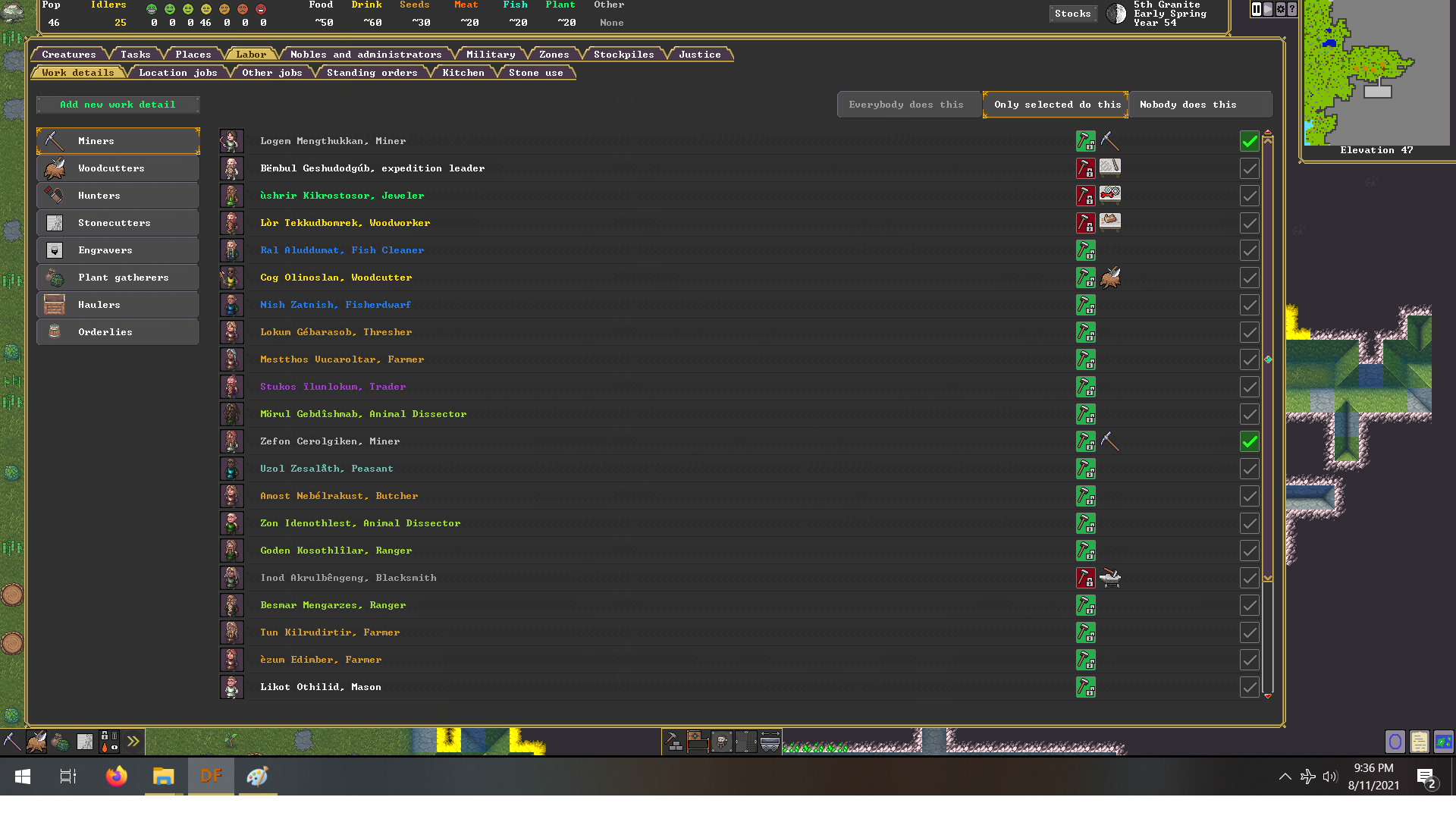
That's easy to get in some biomes, comprising the first few z-levels beneath the earth, and very hard to find in others. To grow proper dwarven crops underground, which you probably started with seeds for, you'll want an underground area with a soil floor: silt, sand, loam, clay, mud, whatever. Dwarven farms are absurdly productive and even a small, unfertilized plot growing Plump Helmets will feed a lot of dwarves. Your farms don't need to be bigger than 2x2 or 4x4.

You can place a field on any soil, under Build-W orkshops- Farming-Farm Plot. Your dwarves can theoretically drink water but it'll rapidly make them murderously upset.įarming is pretty straightforward once you get a few quirks out of the way. Your first dwarves can get along for quite a while on fishing, hunting, and foraging in most biomes, picking up wild produce and turning it into booze with the Still you built during the tutorial. (Image credit: Bay12 Games) Food and drink Dwarves are perfectly happy to have their living and eating quarters directly above or below their working spaces. Two rooms or hallways connected by a staircase have, effectively, no tiles between them-a stockpile of metal beneath your blacksmiths can sometimes be better than one beside it. I'm spelling out exact tile movement and emphasizing staircases because a key bit of design in Dwarf Fortress is about making your underground base at least somewhat vertical. Some players base their whole fortress around a central, 3x3 spine staircase, and that's a pretty solid idea for budding fortress architects. Other creatures and dwarves can get in their way, greatly slowing them down, so it's often good to make major hallways 2-3 tiles wide, and build major staircases in 2x2 blocks. It doesn't matter if that tile is flat ground, stairs, or a ramp. The only way to guarantee something can't move out of a tile is a perfect box of either natural wall or constructed walls, as even locked doors can be battered down by stronger creatures like trolls.įor a moving dwarf, one tile is one tile. They can move diagonally, and are even able to squeeze between the corners of two filled tiles. Let's get some basics established, too: units move from one tile to another at variable speeds based on their species and the like. That way, you stand less of a chance of queuing up 5 items when you might only be able to make one.(Image credit: Bay12 Games) Dwarven ergonomics Alternatively, you could change the conditions of your standing order to have the number of items available set higher. I recommend just using 1/1 on nearly all your standing orders for this reason. You'll receive an error message for each one of those. The way you currently have it if the order is triggered if may successfully craft one, you run out of materials, and the other 4 are still queued.

Since the conditions of the order are to repeat it if the order was successful, then it will only continue until just 1 fails if setup this way.

That way, you should only receive 1 cancellation messages and then not again until the conditions are met once more. So, one easy way to avoid a lot of that is changing your prepare order to just 1 unit. If you're seeing a cancel message it means that the work order was created because it met your conditions, but the conditions don't ensure that when the order is created there are enough materials to create the 5 you want it to craft. Is there a hidden requirement here I'm not aware of or something? I constantly get ".cancels prepare fine meal: Needs unrotten cookable solid item"įor other work orders, the requirement to have them prevents the warning from popping up. Originally posted by Giant Space Hamster:I'm having trouble making a prepare meal work order that doesn't constantly trigger alerts.Īmount of unrotten prepared meals less than (=) 10


 0 kommentar(er)
0 kommentar(er)
